Swiss photographer Markus Klinko (b. 1961) is known worldwide for his work in high fashion and with celebrities, and his early images of musicians – from David Bowie and Beyoncé to Britney Spears and Mariah Carey – are considered defining masterpieces. Klinko’s high-level concept and production photography over his decades-long career continues to attract avid photographers and shape mass visual culture to this day. At the end of last year, International Pop Galleries At New York announced their representation of Klinkoan exciting development for the artist and the gallery.
Gallery founder Jeff Jaffe said, “As a gallery that represents Pop Art and ‘pop culture art’, Klinko is a natural fit. Over the 25 years of Pop International Galleries, adding the work of this amazing photographer to our incredible stable of artists is both a privilege and a visual imperative. He sees the celebrity world in a way celebrities want to be seen, delivering a joyful visual plethora that reflects pop culture and remains unmistakably Markus Klinko.
We caught up with Klinko to find out more about his journey to becoming one of the top celebrity photographers and what’s in store for the 20th anniversary of his iconic Beyoncé photo.
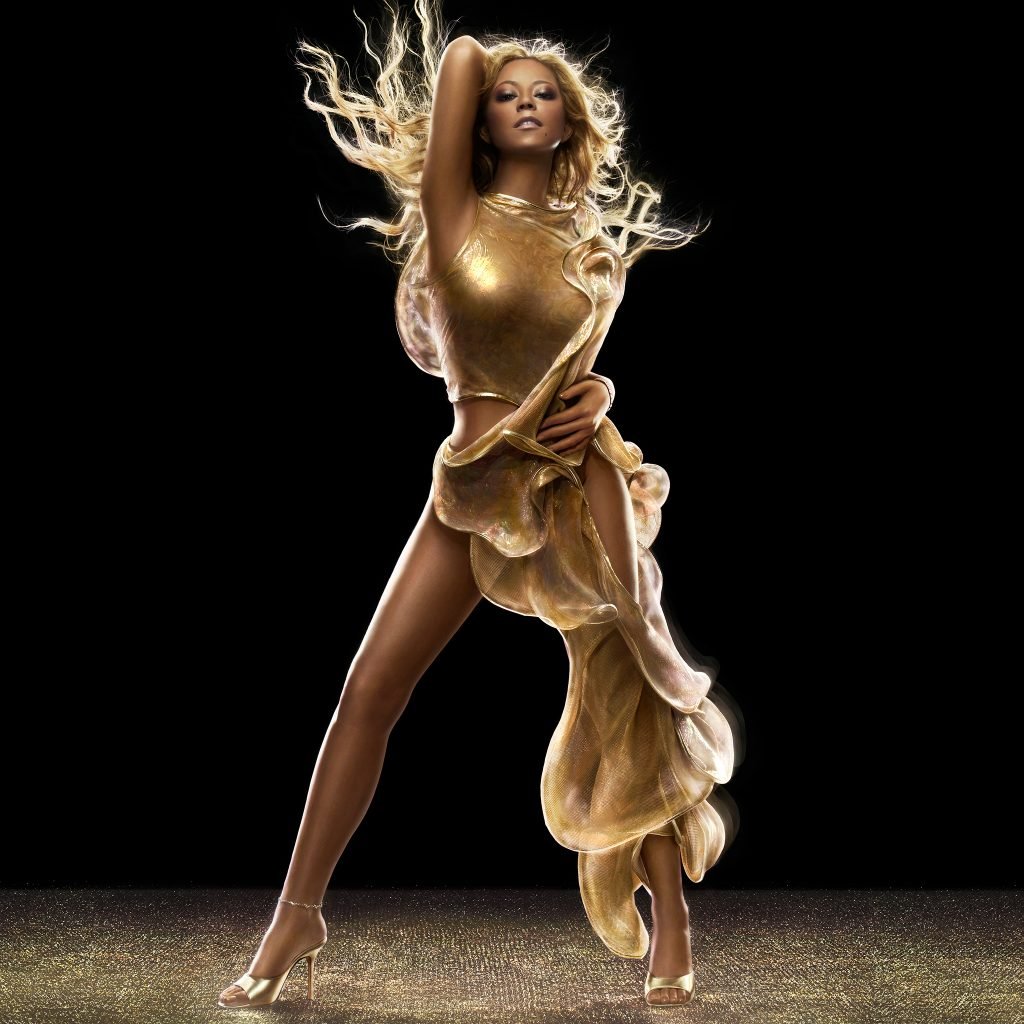
Markus Klinko, Mariah Carey, The Emancipation of Mimi (2005). Courtesy of the artist.
You are world famous for your images of famous people, so I was surprised to read that you were reluctant to photograph musicians and celebrities at the start of your career. Why was that, and what made you change your mind?
As a child, my dream was to become a famous classical concert harpist and recording artist. Against all odds, that dream actually came true in the early 90s, and I traveled the world performing and recording exclusively for EMI Classics, represented by Columbia Artists. vanity lounge, Italian vogue, The New York TimesAnd QG photographed me for features, and I truly believed the world revolved around me! LOL
But in 1994, a mysterious hand injury forced me to give up a lucrative career, which initially sent me into a state of panic. However, within weeks, an epiphany made me realize that I had indeed achieved the lofty goals of my childhood and that continuing on this arduous path, practicing the harp for 10 hours a day, was somewhat repetitive, even redundant.
So, one morning shortly after, I decided to become a head-first fashion photographer, with no experience and never having taken a single picture. My only experience has been on the other side of the camera, posing with my harp!
I decided to learn on my own, and after buying a truckload of camera gear that I had no idea how to use, I locked myself in my New York loft and asked for favors for doing model testing for Elite, Ford, etc. I used the dedication and focus I had previously learned from my classical training and progressed very quickly through trial and error.
However, I initially viewed this new venture as a “reward” for all the hard work I put in over 30 years as a harpist – and I was mostly interested in photographing sexy models! The idea of shooting other musicians or celebrities wasn’t very appealing.
In 1995 I moved back to Paris for a bit and quickly found an agent when things picked up a bit, and started getting orders from small fashion magazines in Paris and London. I also started experimenting very early on – long before it was the norm – with digital post-production.
In 1999, the style I developed started to attract major labels and bigger magazines. And they especially wanted me to do celebrity covers! It took me a bit of getting used to, but everything changed drastically once David Bowie asked me to do his album cover, Pagan, in 2001. It was sort of the official start of my career as a photographer. From there, everything happened very quickly!
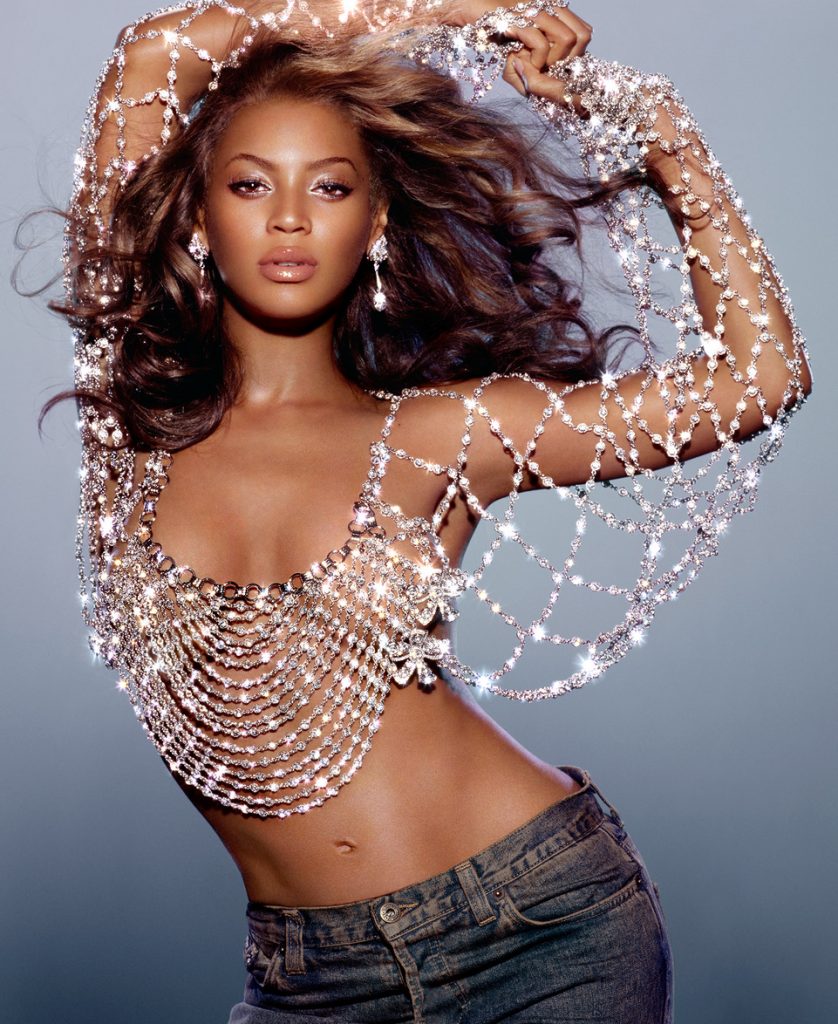
Markus Klinko, Beyonce, Dangerously in love (2003). Courtesy of the artist and Pop International Galleries, New York.
This year marks 20 years since you first photographed Beyoncé for her iconic Dangerously in love album, and you’ve worked with her several times since. Do you have a favorite picture of her? Or can you tell us about some particularly memorable moments?
These images are among my most successful works, and it would be difficult to reduce them to just one!
When Beyoncé asked me to shoot the cover of her first solo album, Dangerously in love, she mentioned a campaign I had done showing Laetitia Casta lying in a diamond-studded spider web. Beyoncé wanted something similar, but smaller. When she arrived for the shoot, with her mom doing her hair, I pointed to the diamond top as they pulled out all the outfits and said, “That’s exactly what we discussed.” But Beyoncé was reluctant because her mother had only brought skirts to pair her with, and she thought it would feel too much like a red carpet. I suggested she pair it with jeans. She liked that idea, but they hadn’t brought any. So, I gave her mine – on that famous iconic cover, she’s wearing my jeans! People ask if that meant I wasn’t wearing pants while I was shooting him, but I was… had another pair on, luckily. A few months later, she returned the jeans. She had had them cleaned and they were nicely wrapped in a ribbon. It was 20 years ago, and since then this cover represents a whole era, the 2000s.
This week I’m releasing a very limited BEYONCÉ DIAMOND DUST, 20th ANNIVERSARY EDITION. It was difficult for me to choose the first three works for this. Moreover, I finally decided to present the jeans alongside the new Diamond editions, in a plexiglass box specially designed for the art! The jeans will debut next month at Pop Galleries in New York.
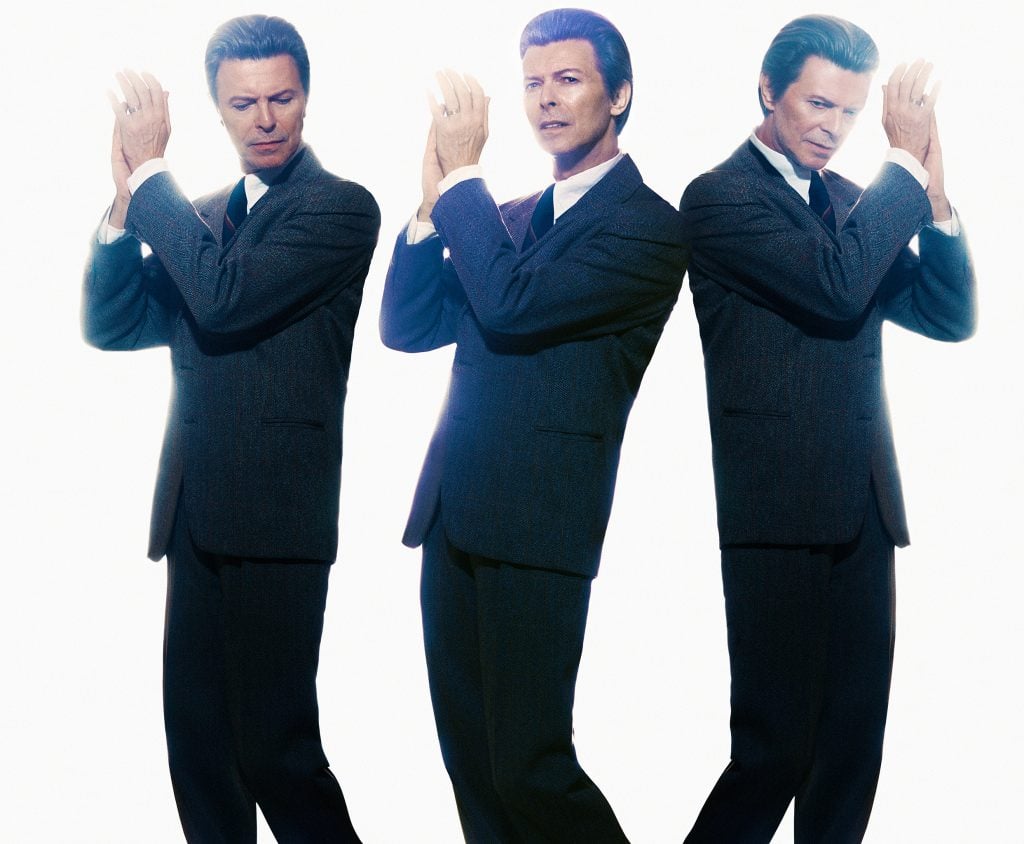
Markus Klinko, Rhythm Roulette (2001). Courtesy of the artist.
Of all the celebrities you’ve photographed, who have you worked with and who would you most like to work with again?
David Bowie. He was such an inspiration. He left us far too soon.
Can you describe your creative process? Do you go into a shoot with a clear idea of what you want to capture, or is it more spontaneous?
Both, literally. I’m very prepared with specific ideas, my mood boards, and everything, but I keep the possibilities wide open for the magic to happen.
Where do you look for inspiration? Are there other photographers or artists, historical or contemporary, who have influenced your practice?
I am influenced by a wide range of pop cultures and actually consider myself a “pop culture documentarian” more than a fashion photographer.
I’m quite obsessed with Warhol and extremely inspired by how he organized himself as an artist, as well as an entrepreneur, able to work seamlessly with brands and celebrities, and make the defining art of its time.
I also like the work of Helmut Newton, but most other photographers are much less influential. I like to walk in my own direction.
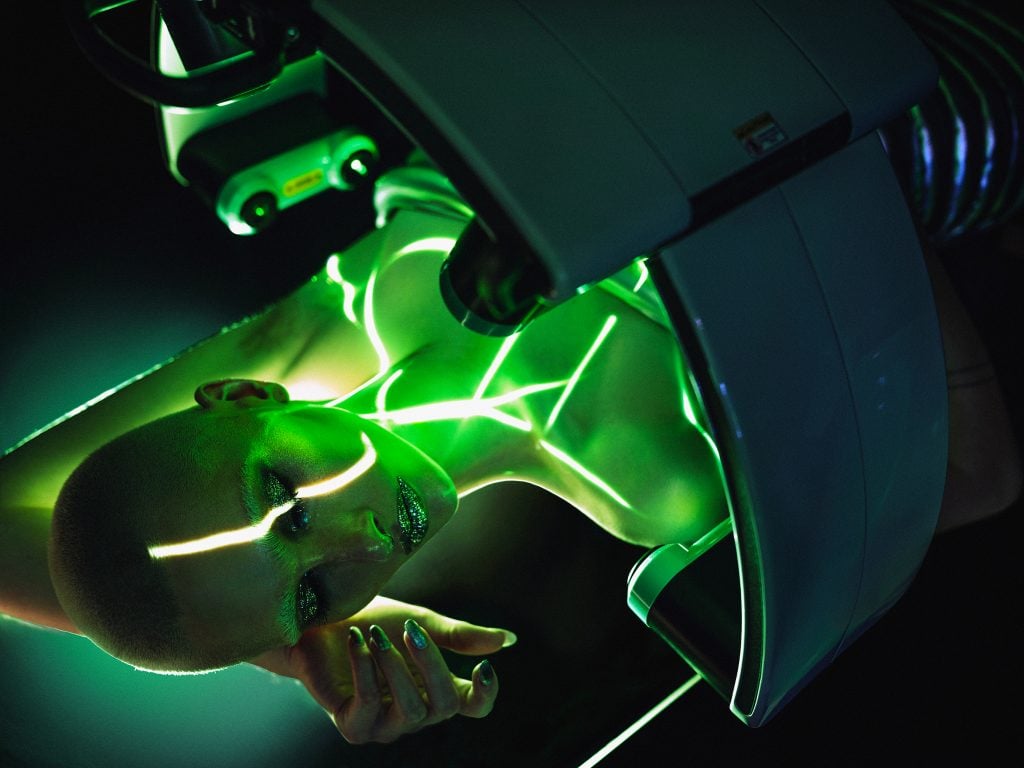
Markus Klinko, The Angel Factory, Emerald #8 (2023). Courtesy of the artist.
With the advent of things like AI, social media, and other technologies, do you have any observations or predictions about the future of photography?
In addition to fashion stylists, makeup artists, hair magicians, set designers, retouchers and photo-compositing artists, my team indeed now also includes a very accomplished AI expert! I continue to stay a few steps ahead in this game.
In 2004, I was the very first photographer to shoot a global L’Oréal Paris advertising campaign with a digital camera! They were so scared but trusted me, and it was a huge success! I gave up film and digitization in 2004.
I also work very closely with Fujifilm in the development of their flagship medium format cameras, such as the GFX 100S.
I am a very technical photographer and I explore all advances with impatience.
Can you tell us something about what you are currently working on? Or, alternatively, something you’d like to work on that you haven’t done yet?
I have several major solo exhibitions coming up in the next few months including Markowicz Gallery, Dallas on June 8th and Jennifer Balcos Gallery, Atlanta on June 15th. Both opening events are supported by Rolls Royce, and I’m also currently working with them on new shoots as well! But I’m particularly excited about opening this fall at Pop International Galleries in New York!
I’m also constantly shooting new projects in a row. For example, I just photographed the last cover of Paper magazine with Ice Spice, who is currently the sexiest artist in the world! Seeing my work with her go from magazine cover to the walls of Pop International Galleries in a matter of days was a somewhat unprecedented experience. Normally, it takes at least 20 years for celebrity photos to hit art galleries, so I’m proud to be able to change that a bit!
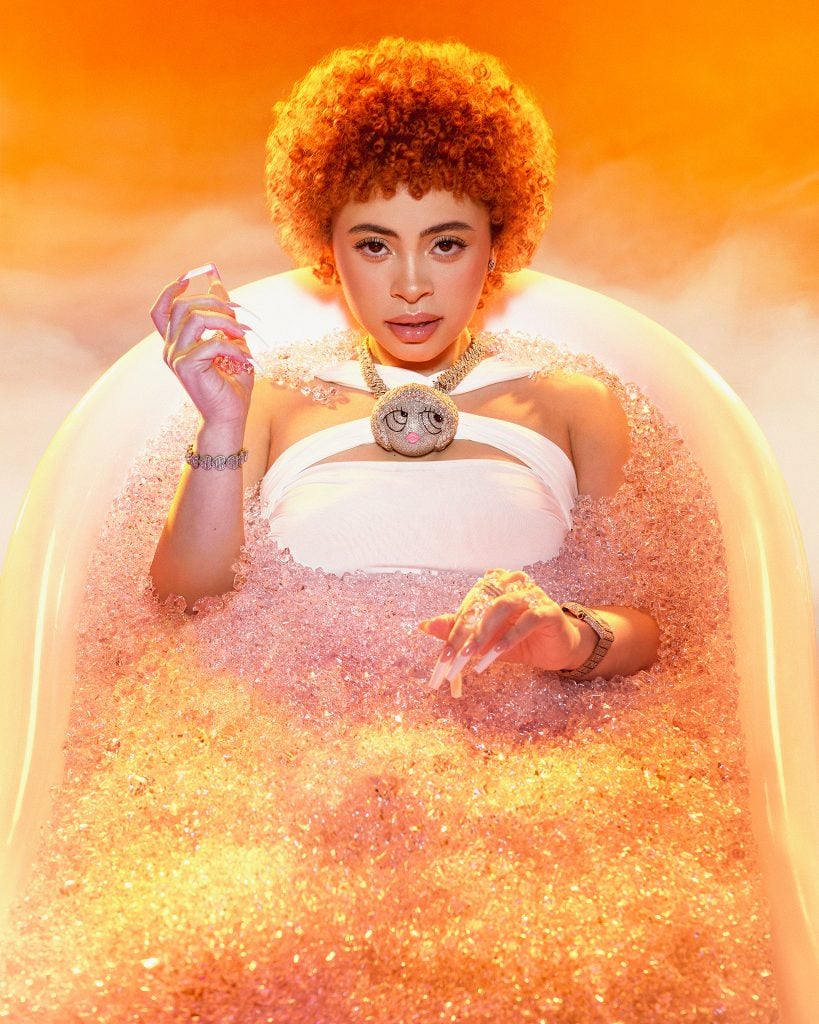
Markus Klinko, Spice Ice, The Bath (2023). Courtesy of the artist.
Explore the work of Markus Klinko with Pop International Galleries here.
Follow Artnet News on Facebook:
Want to stay one step ahead of the art world? Subscribe to our newsletter to receive breaking news, revealing interviews and incisive reviews that move the conversation forward.
